More Icterids – Bullock’s Oriole and Western Meadowlark
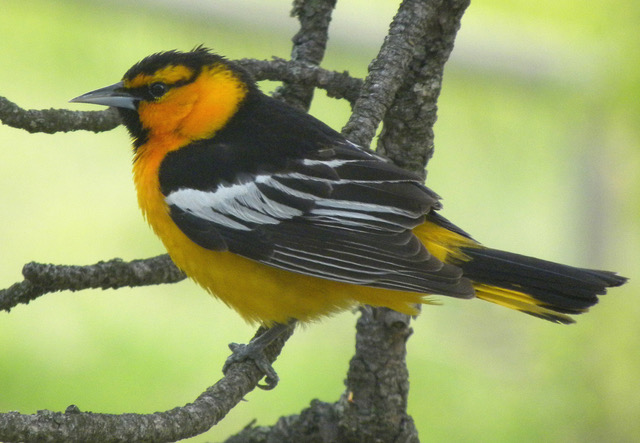
In the spring posting we looked at three of the family known as Icterids. Those three were Red-winged Blackbird, Brewer’s Blackbird and Yellow-headed Blackbird. Today let’s turn our attention to two more Icterids, namely the Bullock’s Oriole and the Western Meadowlark.
Orioles are a large group of birds found across the world, but the only oriole known to breed here in summer is the Bullock’s Oriole. In the east, Baltimore Orioles are the summer visitor. While the male Baltimore Oriole has a black hood on its orange body, our Bullock’s Oriole male sports an orange face with just a black cap and a black throat. The wings are black and white and the eye black. Female birds are paler and yellower. In size they are both 6.5”/~16-19cm with a wingspan of 10-12”/~25-30cm.
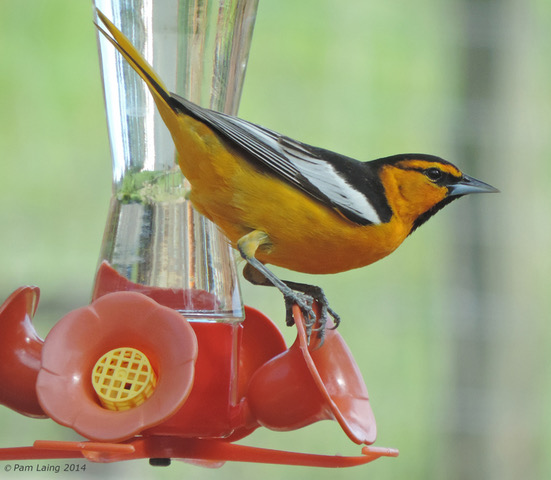
You can tell when you look at them carefully that they are related to all three of the birds we focused on in spring, mentioned above. They have the same body shape, bill shape and general size. We will see the same is true of the Western Meadowlark. Only the plumage details differ. In the case of this bird it’s a bright splash of the colour orange. Their range in Canada is not wide, limited to extreme southern BC and Alberta, but they are found throughout the western US during the summer months.
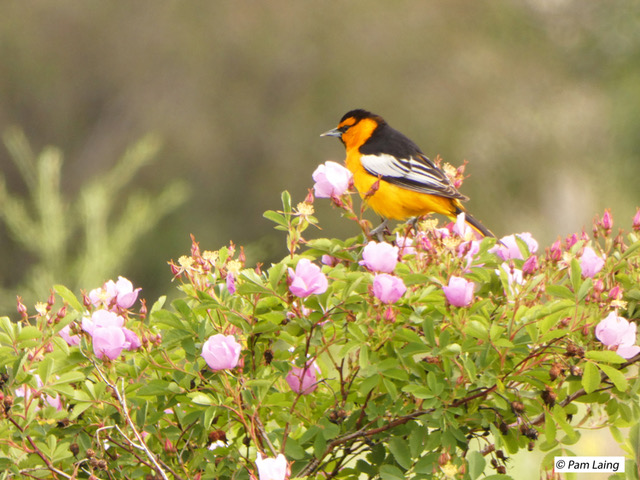
Bullock’s Orioles are not only colourful but also creative in their nest-building, weaving a hanging basket of woven plant strips which is attached to the tips of deciduous branches. (In winter these old nests look like old socks hanging up there!) Bullock’s Orioles raise one brood of 4 – 5 chicks and feed them on insects, in particular grasshoppers and caterpillars, but also ants, beetles and spiders. When fruit or nectar is available, they add that to the menu. If you feed hummingbirds and have a feeder with bee guards, try removing one of the guards. You might be lucky and attract an oriole to your feeder, as they love the sweet syrup and it is a good source of high energy food for them.
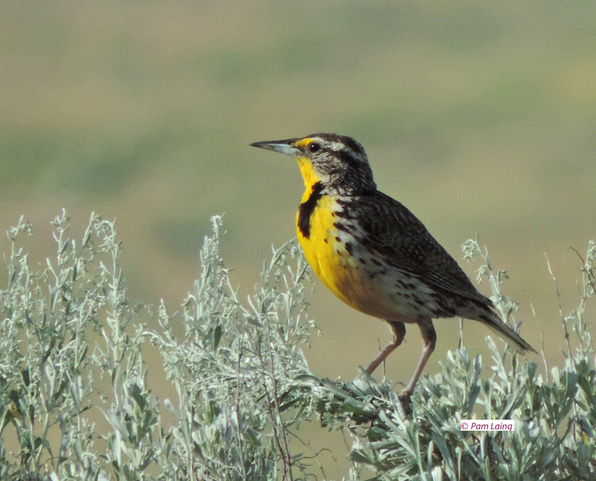
Far less colourful than the Bullock’s Orioles but with a much more resonant and appealing song, the Western Meadowlark is our other Icterid today. While Bullock’s Orioles nest in deciduous trees in parks, gardens or mixed woodlands, Western Meadowlarks are found on the grasslands. Look for them on Beaver Lake Road, where they often perch on the fence posts or occasional shrubs to fling their heads back and sing their lovely, far-carrying song.
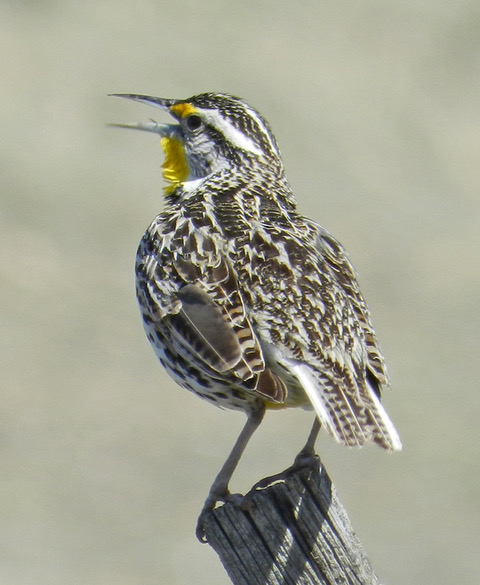
The male Western Meadowlark is a heavy-bodied, short-tailed, long-billed Icterid. His back and wings are a mottled brown and beige but his throat and belly are bright yellow. Like the Eastern Meadowlark he has a black V-shaped marking across his upper breast, not unlike a mayor’s chain of office. Slightly larger than the Bullock’s Oriole, and with slightly longer wings, the Western Meadowlark builds its domed grass cup in tall grasses where it will be well-hidden. Females lay between 3 and 7 eggs and raise a single brood each summer. They feed mostly on insects including beetles, grasshoppers and grubs but they also like grains and grass seeds.
Returning earlier than the orioles, who do not arrive to breed here typically until the first week in May, meadowlarks can be here by mid-March. It’s always a joy to hear their loud songs for the first time each year. The song is an unmistakable and complex series of bubbling, whistled notes that descend in pitch, one of the most welcome signs of spring and the approaching summer. In range Western Meadowlarks, surprisingly, can be found in summer as far east across Canada as the Great Lakes. By contrast the Eastern Meadowlark is only found in Ontario, Quebec and the Atlantic Provinces. The songs of the two meadowlarks are distinctive and quite different.
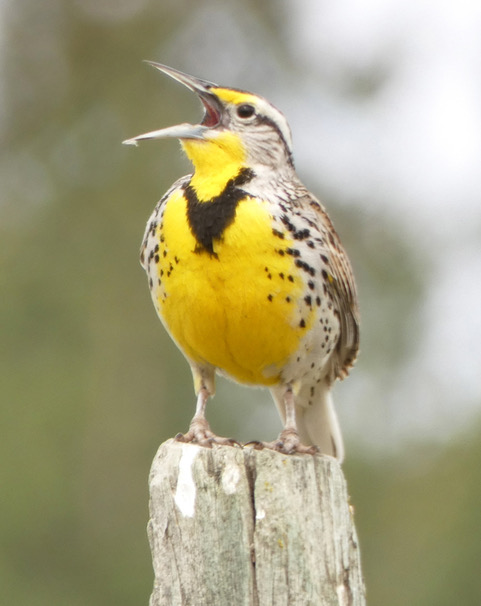
I have heard and seen both of these species frequently recently and they will be with us raising their young until it’s time to head south again for the cooler months. See how many you can see before they go!
Pam Laing
Okanagan birder







Duane Thomson
Pam, your descriptions and photographs are amazing. Thank you so very much.
Pam Laing
Thank you! Always a pleasure to put these posts together.